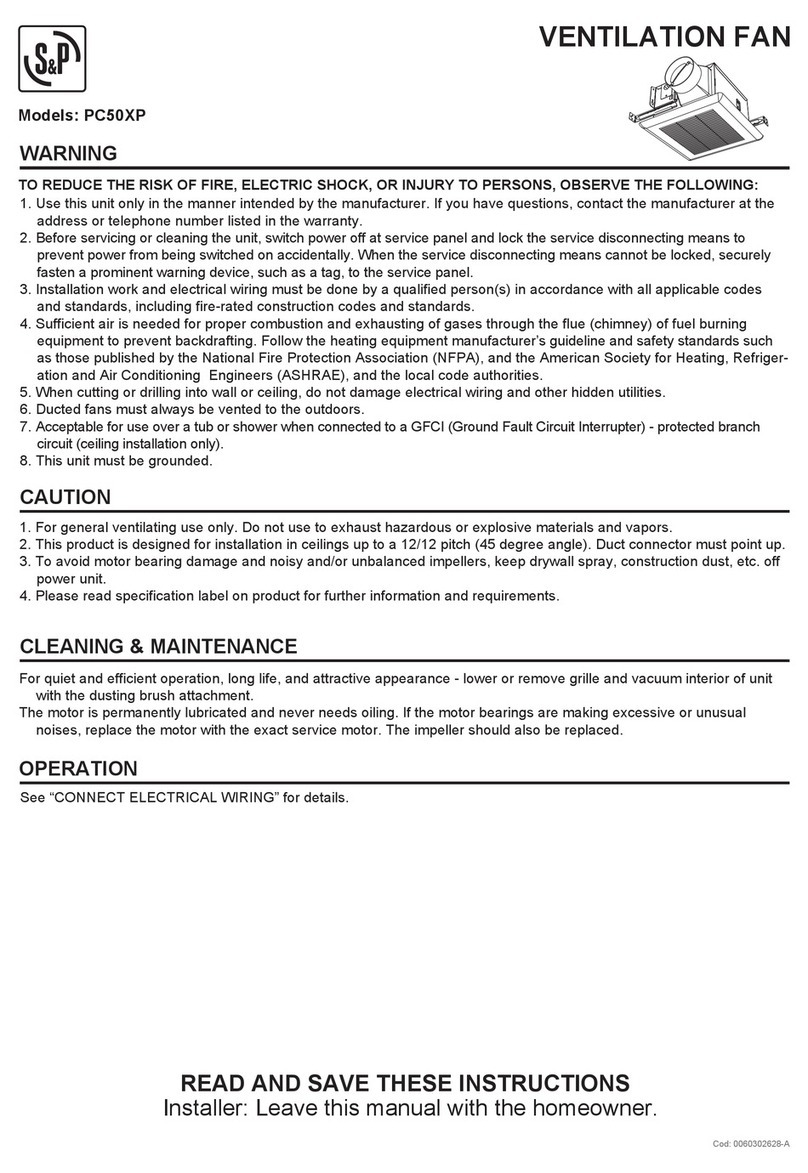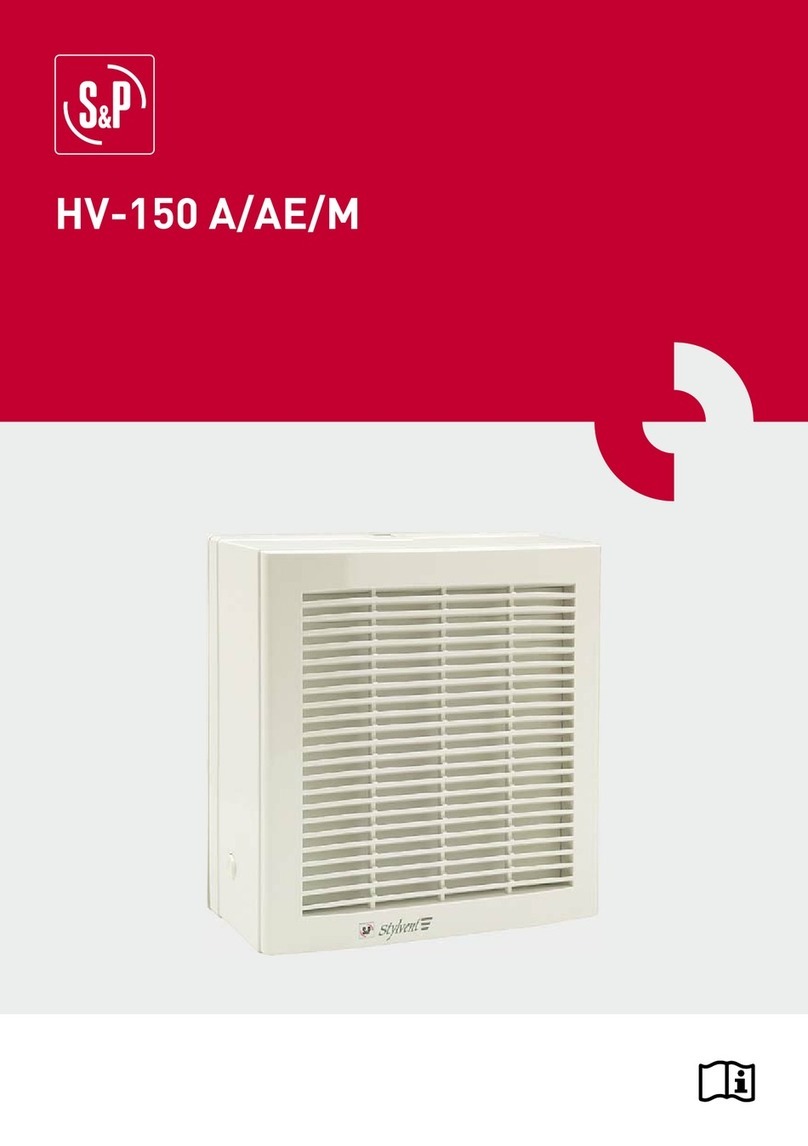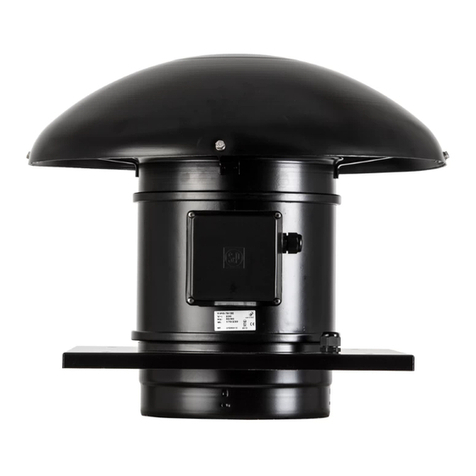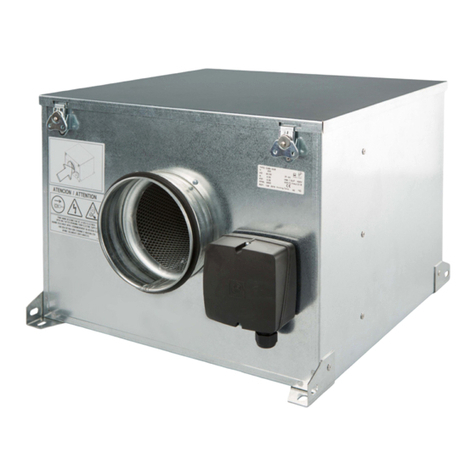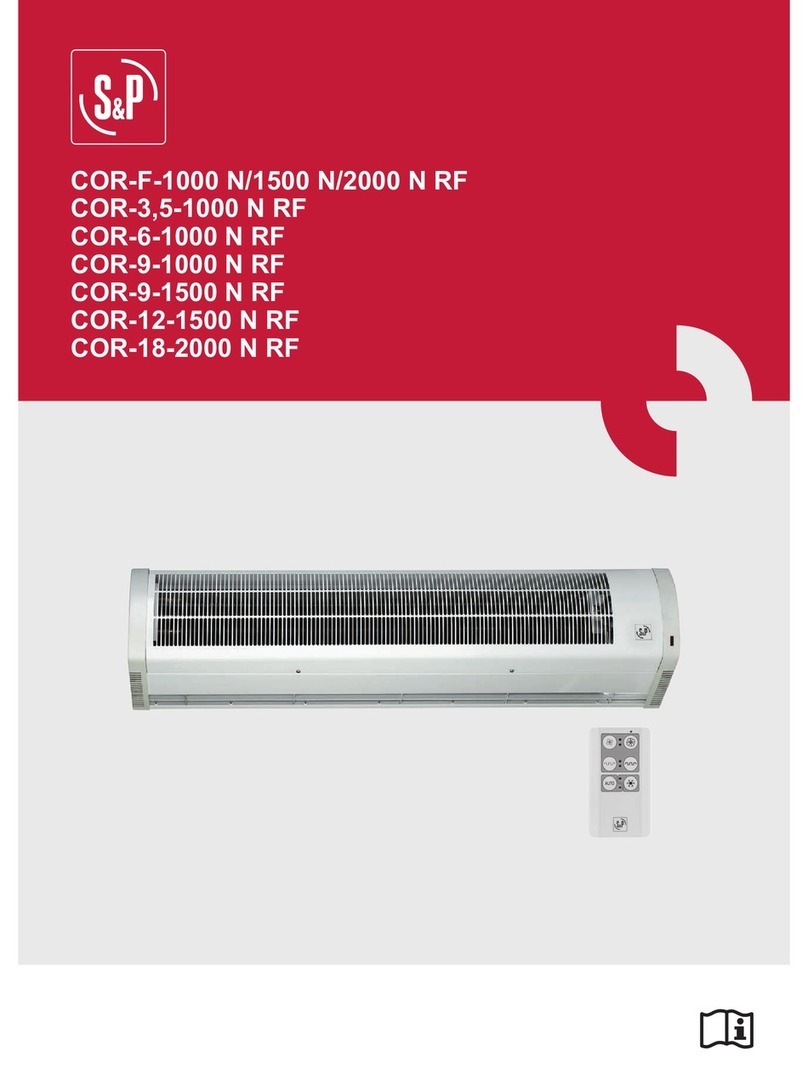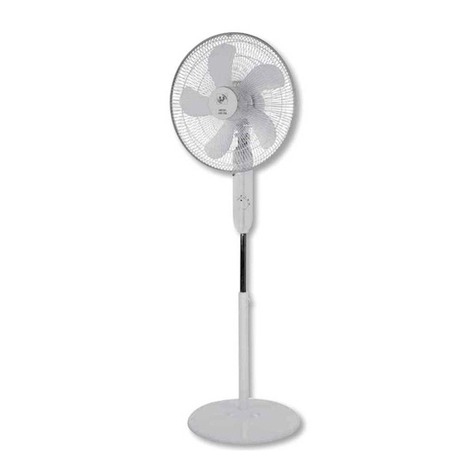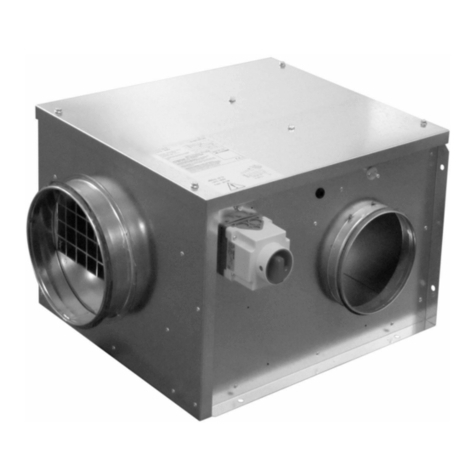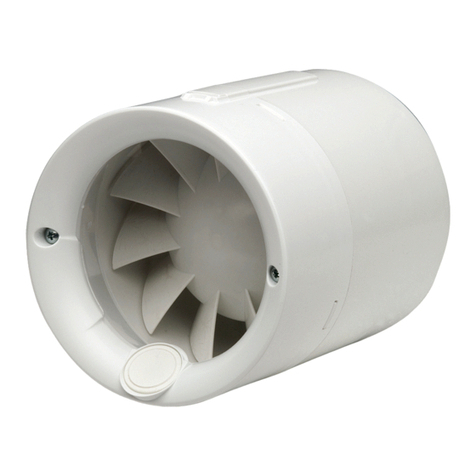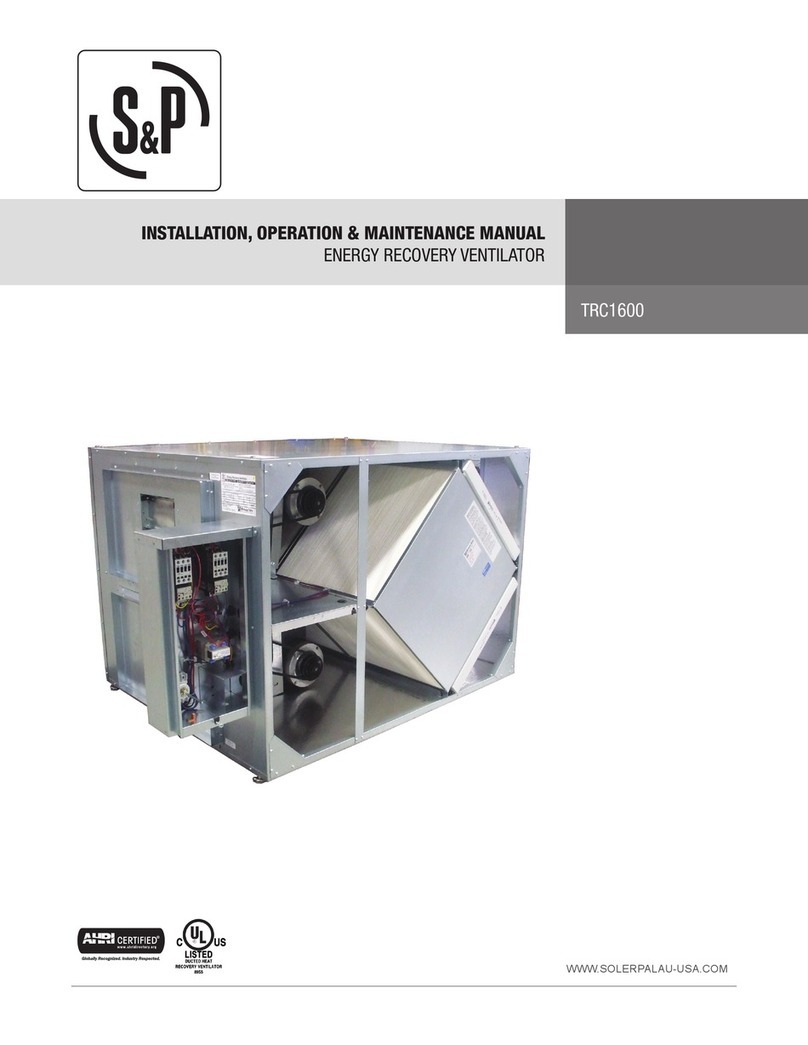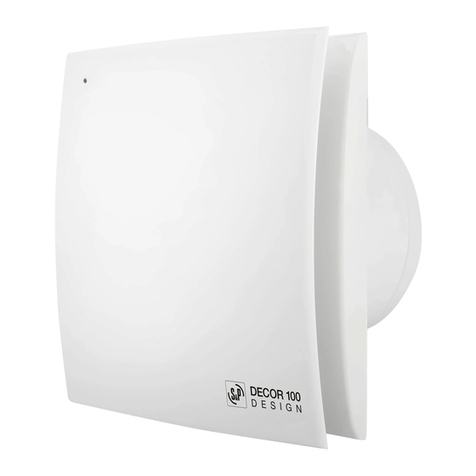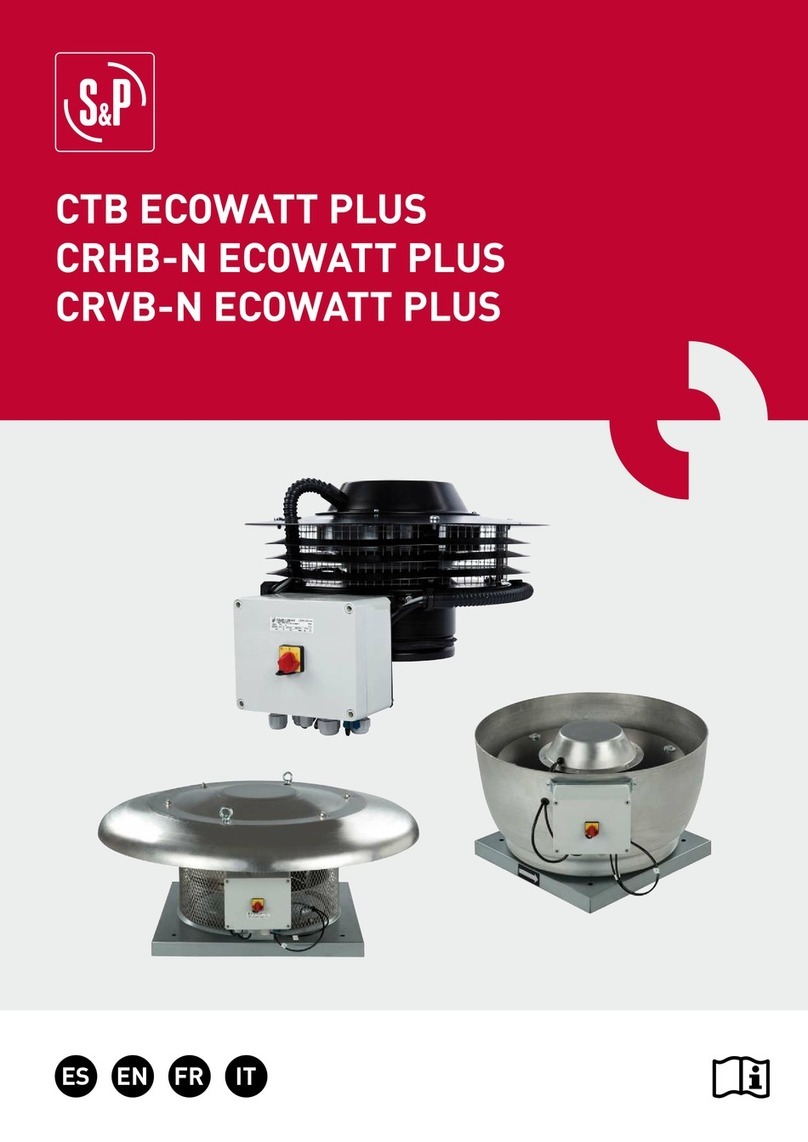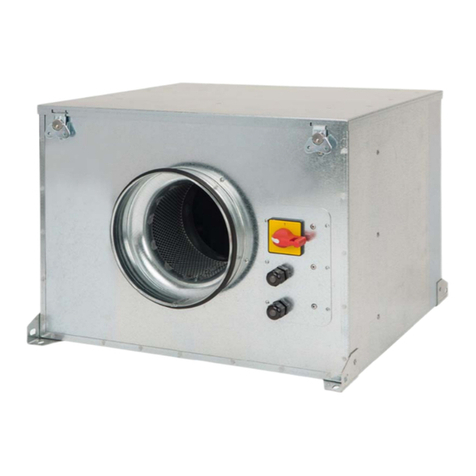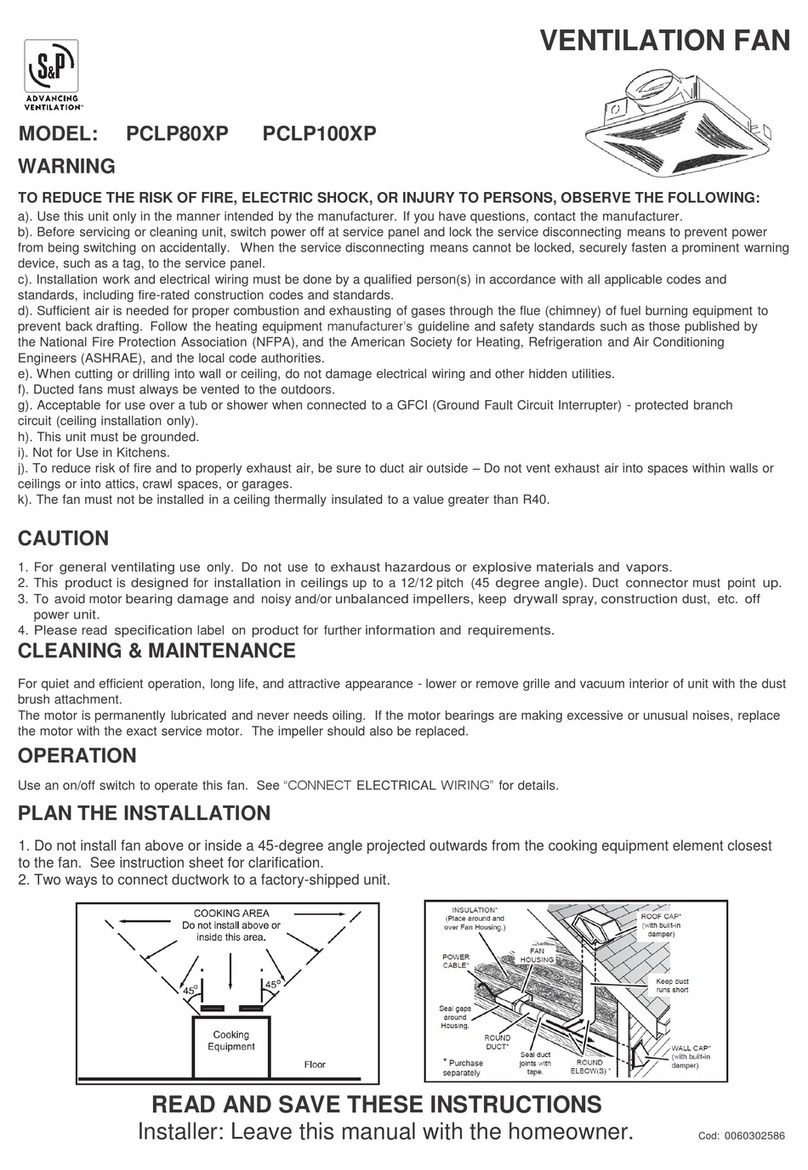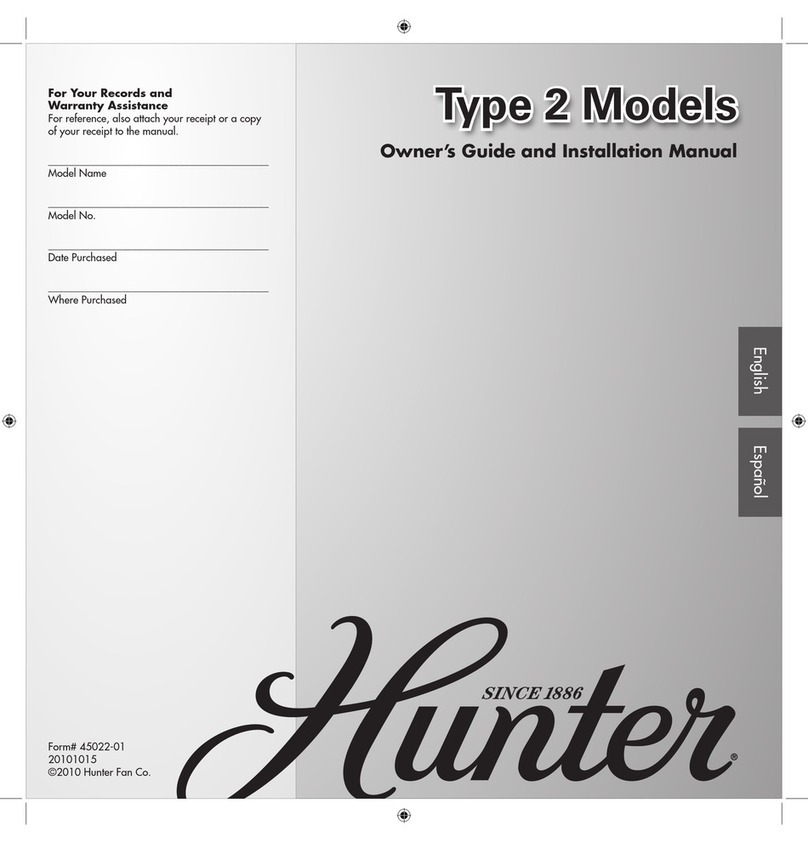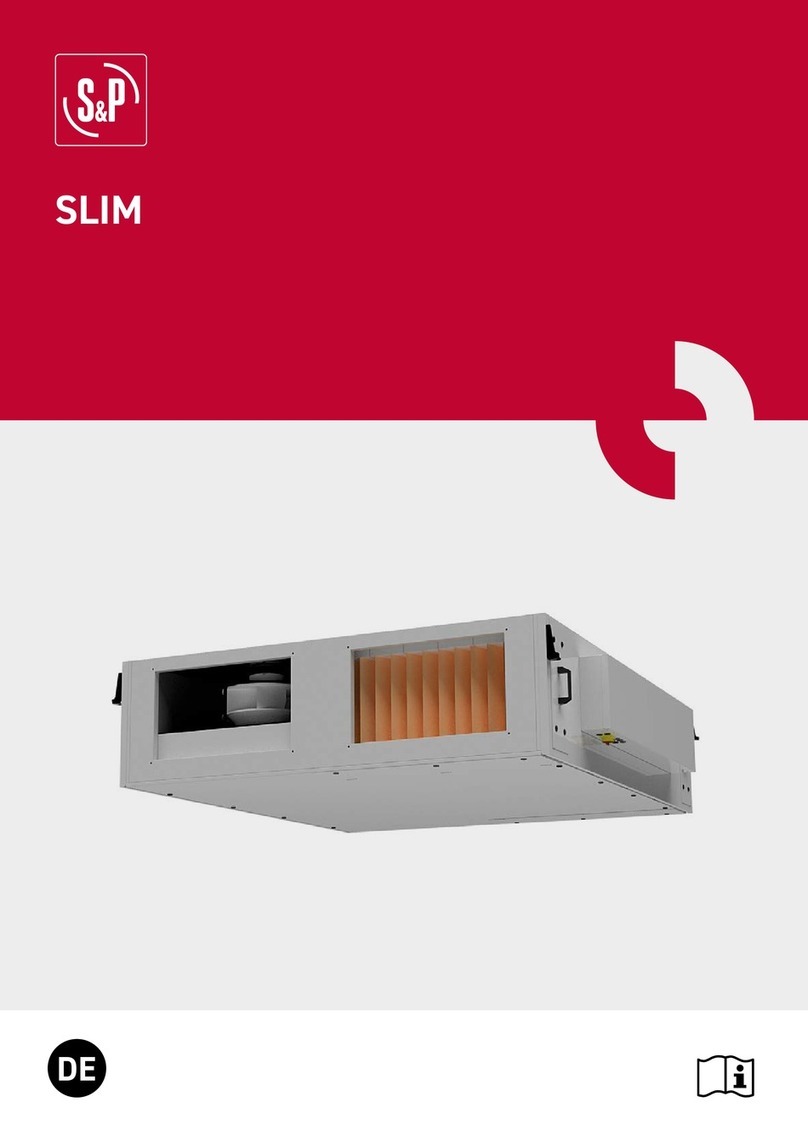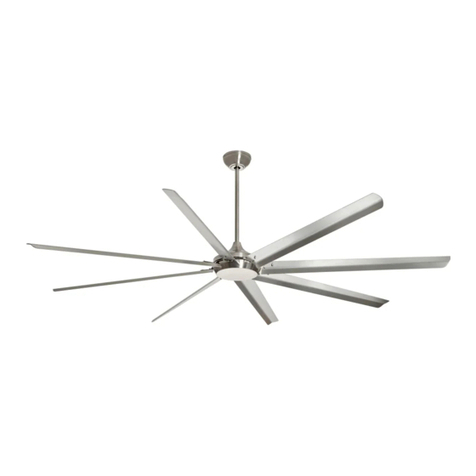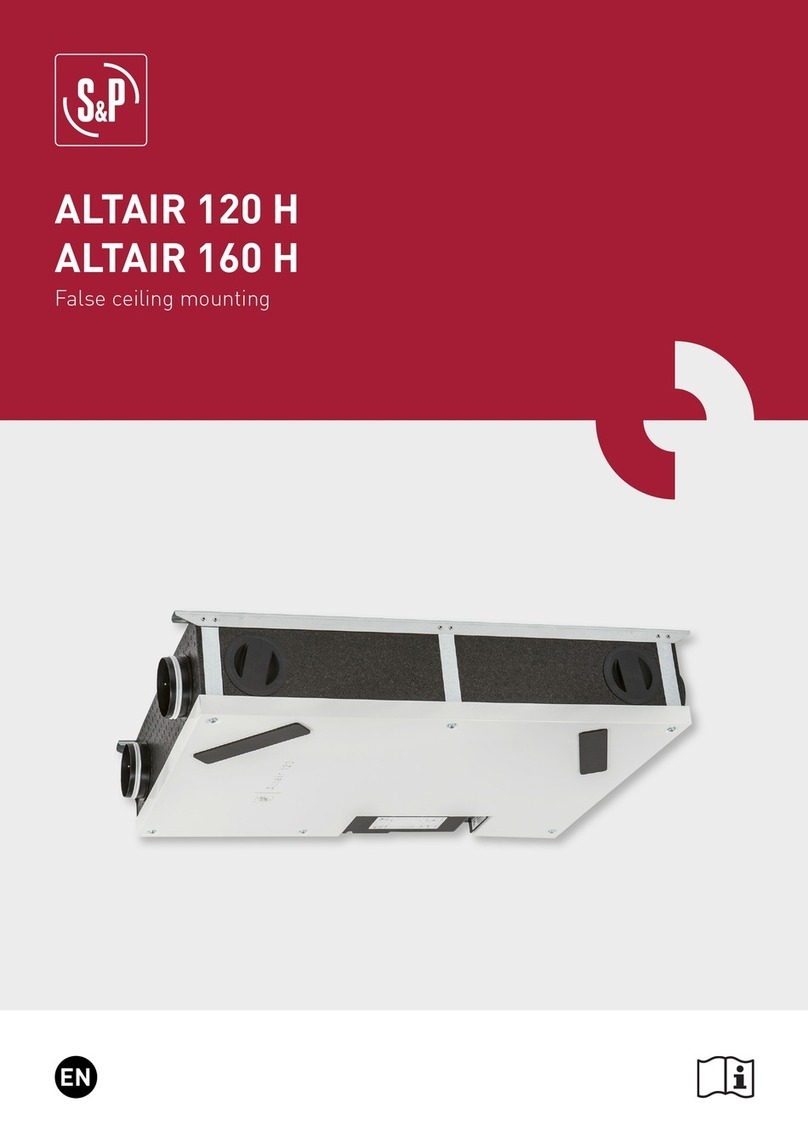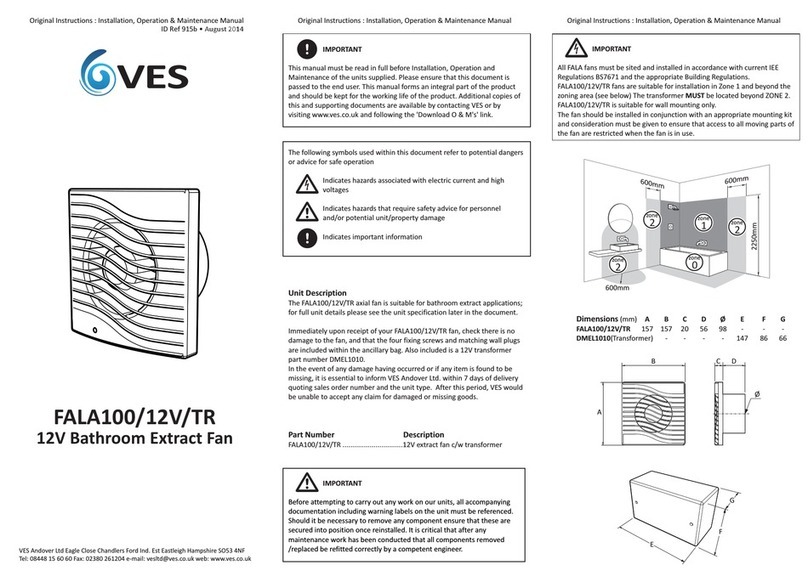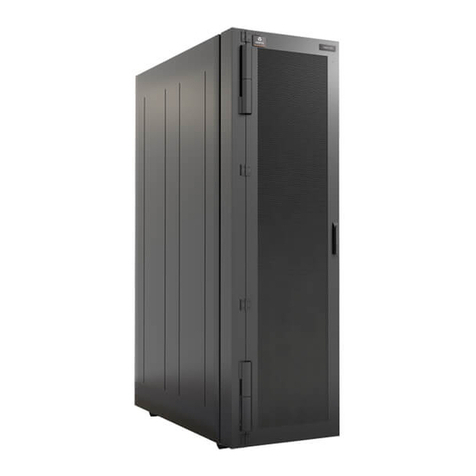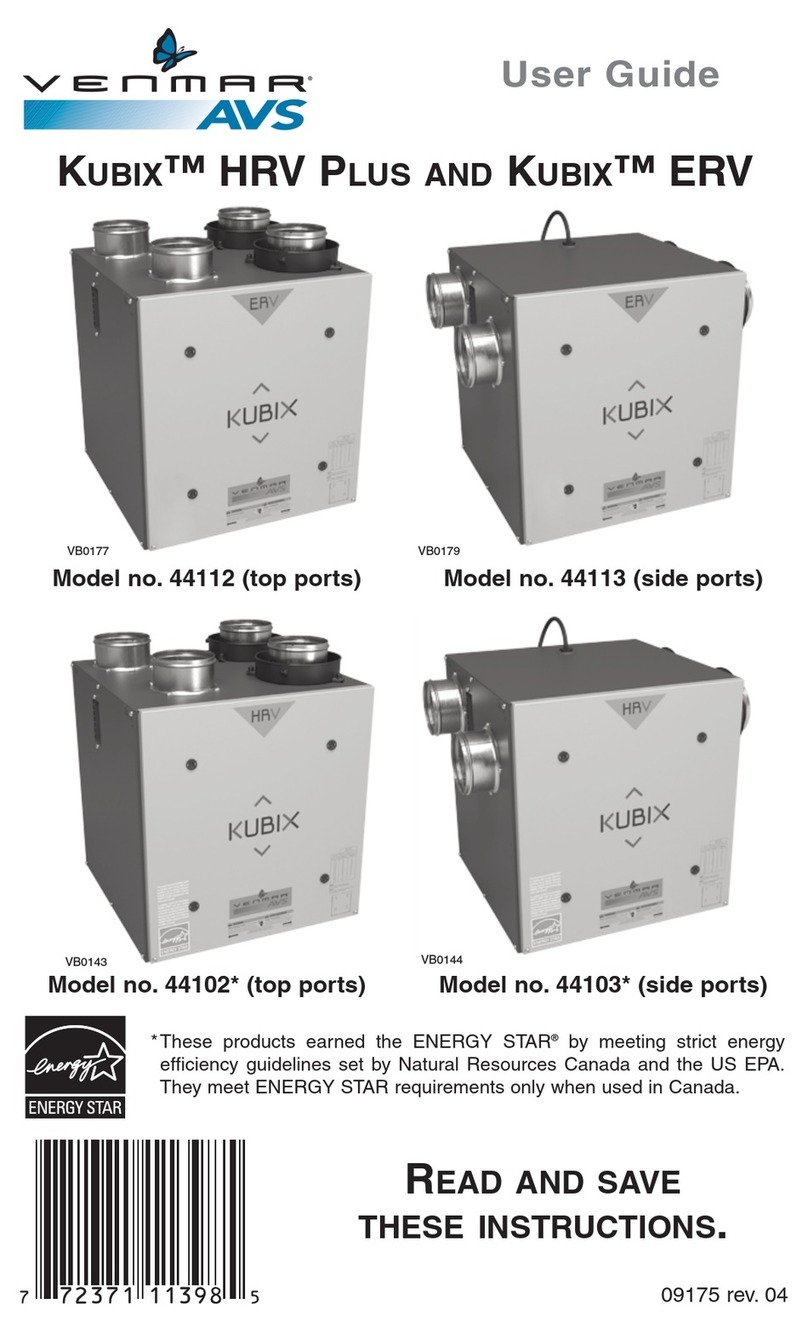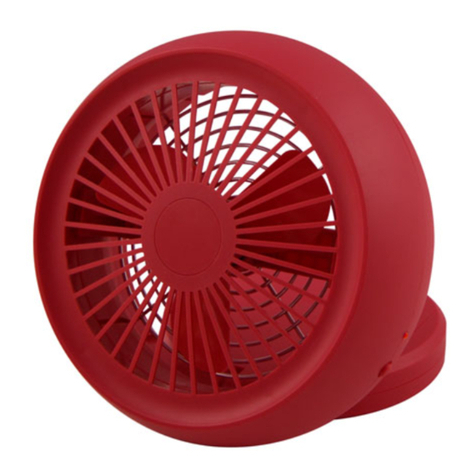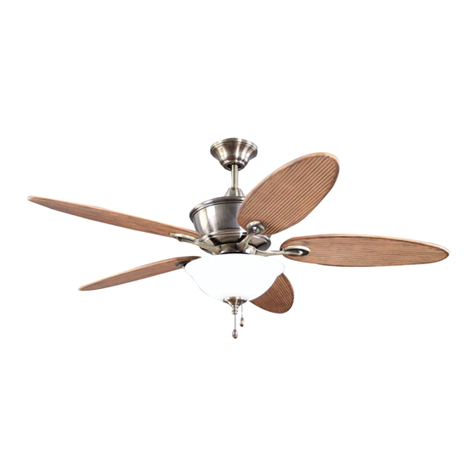
6
ESPAÑOL
MANUAL DE INSTALACIÓN E INSTRUCCIONES DE USO
Aviso: Lea todas las instrucciones detenidamente para asegurar una operación e instalación
segura del equipo.
Ni el fabricante ni el agente/distribuidor ni el comercio donde se compró este producto ten-
drán responsabilidad alguna por daños o perdidas ocasionadas por la compra y/o instalación
de este producto.
NORMAS DE SEGURIDAD GENERAL
Para asegurar una instalación segura de su ventilador de techo, lea las siguientes normas de segu-
ridad general antes de iniciar la instalación.
1.-La instalación del ventilador debe llevarse a cabo por un instalador cualificado.
2.-Para asegurar una instalación perfecta, lea el manual de instrucciones y estudie los diagramas
antes de iniciar la instalación.
3-Todas las conexiones eléctricas deben conformar con las normas vigentes tanto locales como
nacionales. Si no está familiarizado con las instalaciones eléctricas, solicite los servicios de un
instalador cualificado.
4.-tensión alimentación: 230V AC 50Hz.
5.-Estos aparatos deberán conectarse a una toma de tierra.
6.-Los medios de desconexión que deben ser incorporados a la instalación fija,para su
desconexión omnipolar de la red de alimentación, deben presentar una separación de contactos
de como mínimo de 3 mm. en todos los polos.
7.-Asegure que el lugar de instalación deje libre la rotación de la hélice del ventilador. La hélice debe
estar como mínimo a 2.30 m. por encima del suelo una vez instalado.
8.-Si va a instalar más de un ventilador asegúrese de no mezclar las palas de las hélices de distintos
ventiladores, aunque sean del mismo modelo.
9.-Antes de empezar a manipular la red eléctrica, quite los fusibles o desconecte el interruptor
principal del suministro eléctrico.
10.-Después de instalar el ventilador, asegúrese de que todas las fijaciones estén correctas para
evitar la caída del ventilador.
11.-Nunca inserte objetos entre las palas de la hélice mientras el ventilador esté en movimiento.
NOTA IMPORTANTE: Las instrucciones y mecanismos de seguridad que aparecen en este manual
de instrucciones no pretenden cubrir todas las posibles situaciones y condiciones que puedan ocurrir.
Debe entenderse que sentido común, precaución y cuidado son factores que no se puede incluir
dentro del producto. Estos factores lo prestan las personas que mantienen y operan el ventilador.
54
ADVERTENCIAS DE SEGURIDAD
Para asegurar una instalación segura de su ventilador de techo, lea las si-
guientes normas de seguridad general antes de iniciar la instalación.
1.-La instalación del ventilador debe llevarse a cabo por un instalador cuali-
ficado.
2.-Para asegurar una instalación perfecta, lea el manual de instrucciones y
estudie los diagramas antes de iniciar la instalación.
3.-Todas las conexiones eléctricas deben conformar con las normas vigen-
tes tanto locales como nacionales. Si no está familiarizado con las insta-
laciones eléctricas, solicite los servicios de un instalador cualificado.
4.-Tensión alimentación: 230V AC 50Hz.
5.-Estos aparatos deberán conectarse a una toma de tierra.
6.- Los medios de desconexión que deben ser incorporados a la instalación fija,
para su desconexión omnipolar de la red de alimentación, deben presentar
una separación de contactos de como mínimo de 3 mm en todos los polos.
7.-Asegure que el lugar de instalación deje libre la rotación de la hélice del
ventilador. La hélice debe estar como mínimo a 2.30 m por encima del
suelo una vez instalado.
8.-Si va a instalar más de un ventilador asegúrese de no mezclar las palas
de las hélices de distintos ventiladores, aunque sean del mismo modelo.
9.-Antes de empezar a manipular la red eléctrica, quite los fusibles o desco-
necte el interruptor principal del suministro eléctrico.
10.-Después de instalar el ventilador, asegúrese de que todas las fijaciones
estén correctas para evitar la caída del ventilador.
11.-Nunca inserte objetos entre las palas de la hélice mientras el ventilador
esté en movimiento.
12.- Este aparato pueden utilizarlo niños con edad de 8 años y superior y per-
sonas con capacidades físicas, sensoriales o mentales reducidas o falta de
experiencia y conocimiento, si se les ha dado la supervisión o formación
apropiadas respecto al uso del aparato de una manera segura y compren-
den los peligros que implica. Los niños no deben jugar con el aparato.
13.-La limpieza y el mantenimiento a realizar por el usuario no deben reali-
zarlos los niños sin supervisión.
14.-Cada ventilador ira gobernado por su regulador. No se puede utilizar un
regulador para gobernar más de un ventilador.
INSTRUCCIONES DE DESEMBALAJE
Antes de montar el ventilador de techo, saque las piezas de dentro del embalaje y compruebe que
todos los componentes de la lista estén incluidos. (Fig.1)
A- Soporte gancho. (1 Unidad)
B- Conjunto motor más soporte. (1 Unidad)
C- Palas. (3 Unidades)
D- Tornillo fijación palas. (6 Unidades)
E- Arandela de seguridad. (6 Unidades)
F- Conjunto regulador de velocidad. (1 Unidad)
G- Tacos. (2 Unidades)
H- Tornillos de fijación. (2 Unidades)
I- Arandela de seguridad. (2 Unidades)
J- Protección de tela. (3 Unidades)
Manual de instrucciones.
INSTRUCCIONES DE INSTALACIÓN
FIJACION DEL VENTILADOR DE TECHO
NOTA IMPORTANTE: Siga cada una de las indicaciones que se dan a continuación, de esta forma
evitará la posibilidad de provocar un accidente por caída del aparato que podría llegar a derivar en
responsabilidades penales para el instalador.
Asegúrese de que la distancia desde la parte más baja del ventilador, una vez instalado, hasta el
suelo, sea como mínimo de 2.30 metros.
Compruebe que el punto de fijación del aparato sea capaz de soportar el peso del ventilador en
movimiento según el modelo adquirido.
HTB-75N/HTB-90N mínimo 25 Kg.
HTB-140/HTB-150N mínimo 40 Kg.
Fijación en un techo de hormigón
Para asegurar una fijación adecuada, practique dos agujeros en el techo de hormigón del
diámetro del taco (G). Inserte los tacos suministrados y fije el soporte gancho (A) mediante los
dos tornillos (H) y arandelas de seguridad (I) suministrados para este propósito. (Fig.2)
Fijación en un techo de poca resistencia
Practique un boquete en el techo falso, suficiente para introducir por él un travesaño rígido de
metal o madera lo más largo posible, y nunca menor de 25 cm. de longitud, a fin de asegurar un
mejor reparto del peso del ventilador.
Sitúe el travesaño de forma que el boquete del techo coincida con su parte central, dónde
previamente se habrá practicado una pequeña ranura de tal forma que no debilite su resistencia
mecánica.
Enlace el soporte gancho (A) mediante sus ranuras, y el travesaño con un alambre de hierro gal-
vanizado de 2.5 mm. de diámetro como mínimo. En ningún caso menos de seis veces,
procurando que alguna de las veces pase por la ranura del travesaño. Al final, sujete bien el
alambre con unas cuantas vueltas sobre si mismo.
Asegúrese que el techo es capaz de soportar el peso del ventilador en movimiento (mínimo 25/40 Kg.).
(Fig. 3)
6
